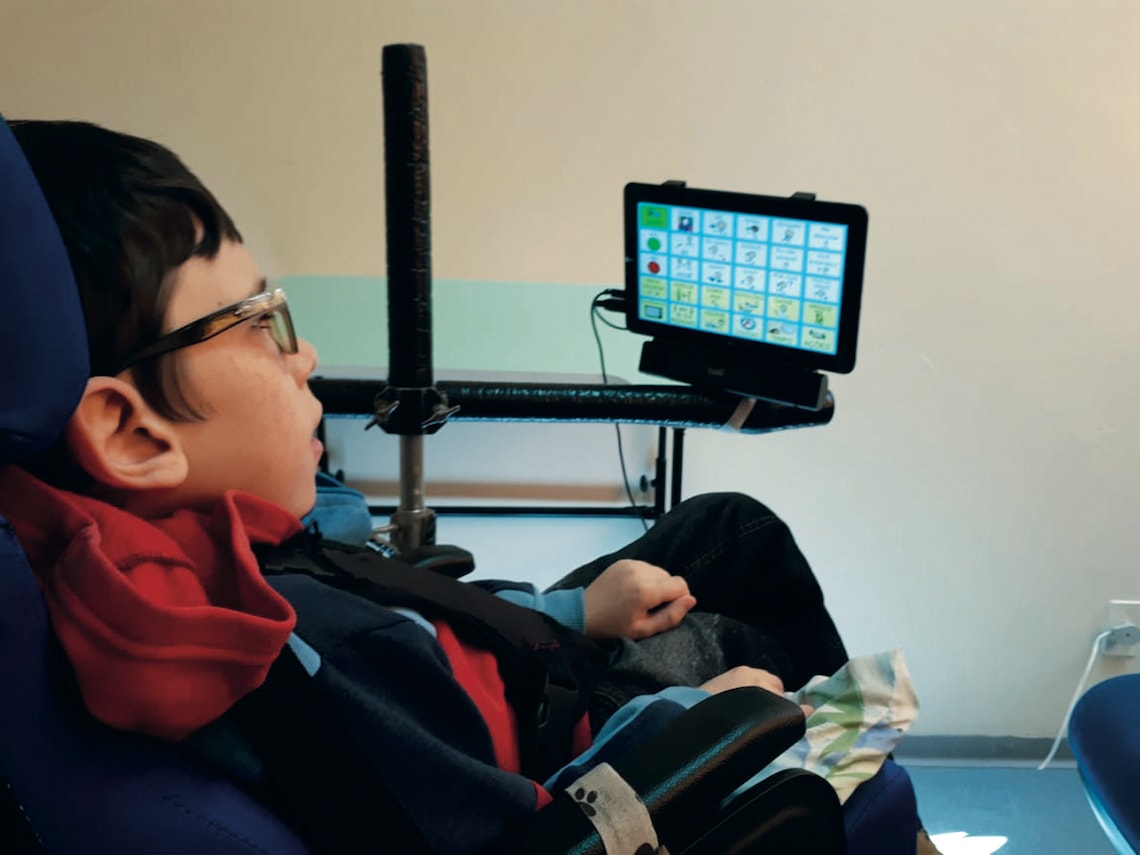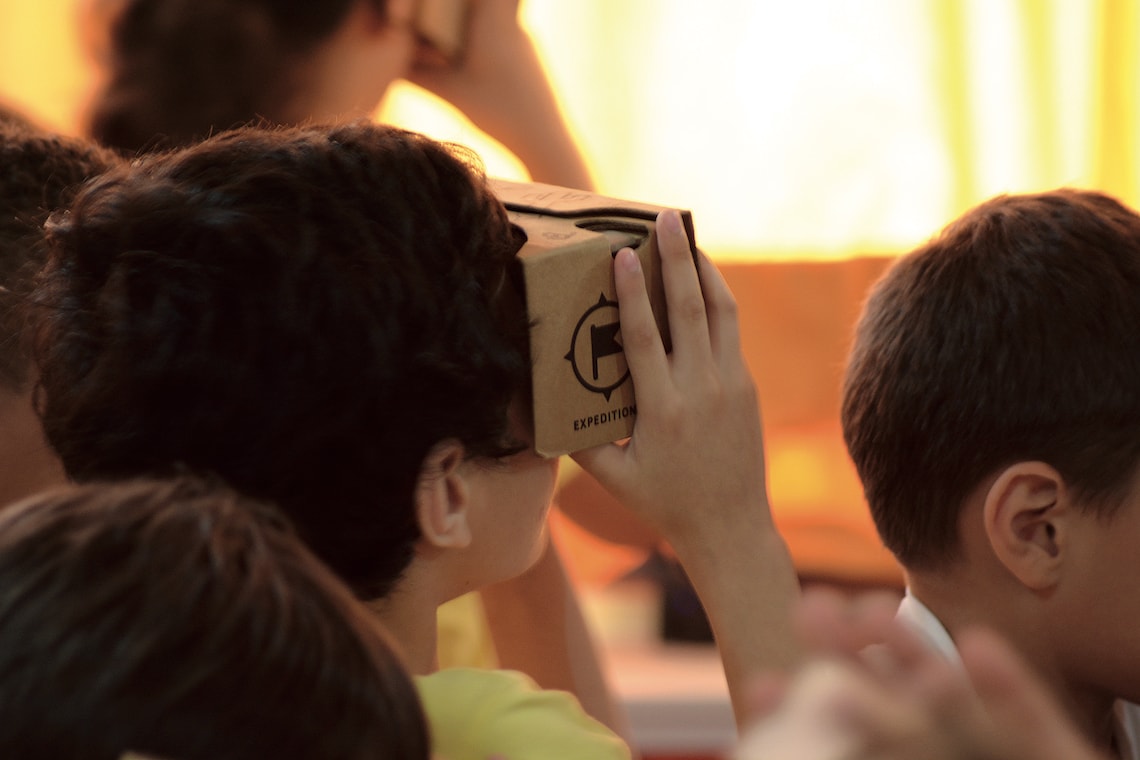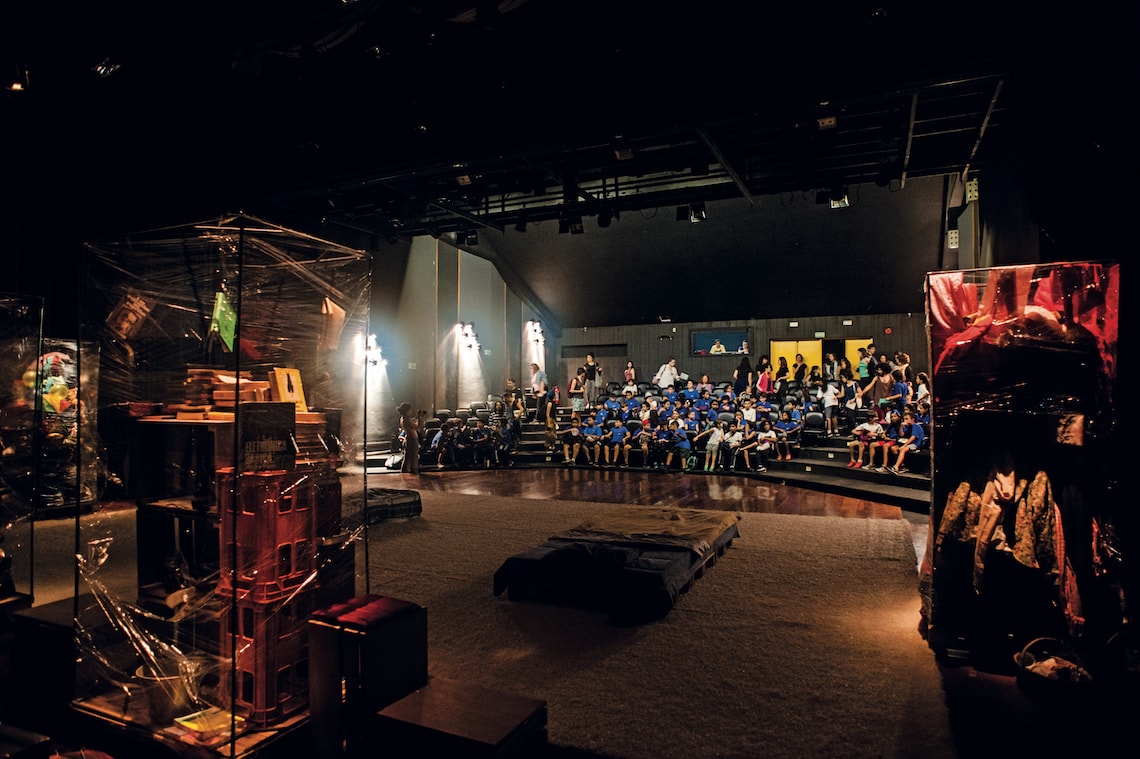Laboratory schools were introduced in Brazil by a Federal decree in 1946 as a test bed for new educational methods and a space for training university students pursuing degrees in pedagogy or bachelor of education degrees in the humanities, life sciences, and STEM fields. At these schools, interaction among professionals across the primary, secondary, and higher education levels not only fosters discussion around basic education, but also allows partner universities to work with affiliated schools in developing innovative solutions to educational problems. There are currently 17 schools in Brazil affiliated with federal universities and 5 affiliated with state universities.
A project at the Laboratory School of the Federal University of Santa Catarina (UFSC) epitomizes this collaborative model. Working with researchers from junior enterprise i9 Consultoria, at the university’s School of Engineering, the school developed an optimized learning process for students with cerebral palsy. In 2016, Eduardo Wehrlich Ferreira, a 10-year-old fifth-grader, had to use paper cards to communicate and participate in classes. While he was able to keep up with his classmates, his ability to interact with them was limited.
The school decided to purchase a special computer that would allow Eduardo to use alternative communication technologies in class. Funding to purchase the equipment came from an accessibility training program for schoolteachers developed by the Laboratory for Educator Training (LIFE) at UFSC and funded by the Brazilian Federal Agency for Support and Evaluation of Graduate Education (CAPES). The computer features eye-tracking assistive technology that is integrated with communications software. Eduardo can now communicate using symbols and texts displayed on a screen that are then translated into synthesized speech.

LIFE / UFSC
In Santa Catarina, assistive technology developed at UFSC helps Eduardo to communicate in classLIFE / UFSCLuana Zimmer Sarzi, a special education teacher at the school, had previously worked with Eduardo, assisting him with his activities at school. When the computer arrived, she helped him learn the new tools. Although his scholastic achievement and his ability to express himself independently did improve, Eduardo was only able to use the equipment—which sat on his classroom desk—when he was in class. In addition to this spatial limitation, the lack of a special fixture meant that the sensor would often come out of line with his line of sight, preventing access to the controls.
That’s when Hamilton de Godoy Wielewicki, a coordinator at LIFE, got involved. He approached the Mechanical Production Engineering Department at the university to enlist professors and students in working together with teachers at the school to develop a solution to Eduardo’s learning challenges. “We needed a low-cost computer fixture that could accommodate the student’s involuntary spasms,” says Wielewicki. The goal was to create something that could later be replicated at commercial scale. The project was completed a year later in 2017, in a collective effort involving students, researchers, and professors from the School of Engineering and teachers from the laboratory school. A prototype mechanical arm was built by the company GW Usinagem and mounted on Eduardo’s wheelchair. Since then, he has been able to precisely operate the computer with his eye movements, and carry it around wherever he goes.
Cesar Frantz, an engineer and doctoral student at the robotics laboratory at UFSC, applied for a patent for the invention. “By collaborating with the university, we were able to solve a pedagogical problem and use technology to create a low-cost product that can also help people with similar problems to Eduardo’s,” says Wielewicki. At the laboratory school in Florianópolis, 71 of the 945 attending students are special education students.

LIFE / UFSC
The laboratory at UFSC hosts student projects in different fieldsLIFE / UFSCLaboratory schools have scored higher on the Index of Development of Basic Education (IDEB) in recent years than the average for public schools. In 2015, a laboratory school run by the School of Education at the University of São Paulo (FE-USP), which celebrated its 60th anniversary in 2019, was the top-ranked public high school in São Paulo City with a score of 6.6—the country average in 2015 was 4.5.
Maria Lúcia de Souza Barros Pupo, a professor in the Department of Performing Arts at the School of Communications and Arts (ECA), has led a project over the past three years that aims to facilitate theater appreciation among children. Diego de Castro Camelo, an undergraduate student and a member of the project team, is conducting one arm of the study at the laboratory school. This year he organized two theater excursions with nine classes and a total of 240 children. “The excursions are preceded by sessions in which we introduce students to the language of drama and the theme of the play, and are followed by sessions to discuss and extend the experience and students’ engagement with the play,” says Camelo. Adriana Silva de Oliveira, a performing arts teacher at the laboratory school, says projects like these create learning situations in which children can dialog with the play on the basis of their own repertoire.
Collaboration with university researchers often leads to the adoption of new education methodologies. A case in point is a project developed between 2011 and 2014 by Claudemir Belintane, a professor at the School of Education. With funding from CAPES, the project, titled “The challenge of teaching reading and writing to nine-year-old primary students,” implemented an orality-oriented approach to teaching reading and writing at laboratory schools affiliated with USP and the Federal University of Paraná, and a public school in Pau dos Ferros, Rio Grande do Norte, northeastern Brazil. “This method includes, for example, exercises in which children are asked to find words hidden within other words. The challenge provides a stimulus for reading,” explains Fátima Morissawa, deputy principal at the laboratory school affiliated with USP.
Students at laboratory schools are equipped to become future researchers
A renovated curriculum
Another collaboration between the school and FE was a project to restructure the science curriculum for primary education. Between 2014 and 2017, FE professors Lúcia Helena Sasseron and Martha Marandino held monthly meetings with primary teachers at the school to develop ways to improve the approach to teaching these subjects. One conclusion from the meetings was that the science curriculum should include not only conceptual content, but also information on how science works. “In this new approach, students learn science culture through aspects of everyday life in a science literacy program that includes activities in the school’s vegetable garden and at museums,” says Sasseron, noting that this approach was incorporated into the Brazilian National Common Curriculum guidelines in 2017.
The USP laboratory school has 740 primary and secondary students—all assigned through a public draw—and around 36 teachers, most hired on a dedicated basis. “Having dedicated teachers improves student performance as it allows teachers to devote part of their time to research activities that enhance the learning process by introducing innovative approaches to teaching subjects,” says Carlota Boto of FE. Marcelo de Salete Souza, who teaches visual arts at the school, won a Jabuti award in Brazil and an Eisner award—the most prestigious award in the comics industry, presented annually at San Diego Comic-Con—in the US in 2018 for his book Cumbe, a comic book about slavery in Brazil published four years prior. The book draws on his research on the colonial period and the black community. “We have now developed educational activities about colonial Brazil and slavery that are based around these comics, as a way to spark young students’ interest in their studies,” he says.

Léo Ramos Chaves
Researchers at ECA-USP have investigated strategies to engage young students with the language of dramaLéo Ramos ChavesThe Laboratory School of the Federal University of Pernambuco—which in 2011 earned a score of 8.1 on the IDEB, the highest among public primary and middle schools—has organized capacity-building programs for public school teachers in an effort to take educational practices from the university into schools. Deputy principal Madson Góis Diniz notes that 90% of the teachers at the school have doctorate degrees, which qualifies them to also serve as professors in higher education.
The Center for Applied Education Research at the Federal University of Goias offers a professional master’s degree program in which students develop projects related to the school setting. The center director, Alcir Horácio Silva, advised Grazielle Lopes da Mota Bueno, a municipal schoolteacher, on a project that built a physical education glossary in Brazilian sign language to increase class engagement among students with hearing disabilities. In 2015, students at the school scored an average of 559 on the National High School Examination (ENEM), outperforming the national average of 556.
At the Laboratory School of the Federal University of Sergipe (UFS), some late-middle and high school students are given scholarships to attend junior scientific initiation programs. “The initiative equips students to become future researchers,” says school principal André Oliveira Silva Jarske.
Republish

